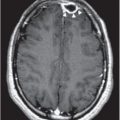| Organism name | Arthropod vector/reservoir | Vertebrate reservoirs | Clinical infection | Geographic region |
|---|---|---|---|---|
| B. recurrentis | Pediculus humanus humanus | Man | LBRF – human | Africa (formerly worldwide) |
| B. baltazardii | Unknown | Unknown | TBRF – human | Iran |
| B. crocidurae | Ornithodoros sonrai | Rodents | TBRF – human | West Africa |
| B. duttonii | Ornithodoros moubata | Man | TBRF – human | Africa (Central, Eastern) |
| B. hermsii | Ornithodoros hermsi | Rodents | TBRF – human; canine | Canada, Western USA |
| B. hispanica | Ornithodoros marocanus; Ornithodoros occidentalis; Ornithodoros kairouanensis (formerly Ornithodoros erraticusa) | Rodents | TBRF – human | Algeria, Morocco, Portugal, Spain, Tunisia |
| B. latyschewii | Ornithodoros tartakovskyi | Rodents; reptiles | TBRF – human | Central Asia, Iran, Iraq |
| B. mazzottii | Ornithodoros talaje | Armadillos; rodents | TBRF – human | Southern USA, Mexico, Guatemala |
| B. merionesi | Ornithodoros costalis Ornithodoros merionesi | Rodents | Unknown | North Africa |
| B. microti | Ornithodoros erraticusb | Africa, Iran | ||
| B. parkeri | Ornithodoros parkeri | Rodents | TBRF – human | Western USA |
| B. persica | Ornithodoros tholozani | Rodents; bats | TBRF – human; cat | Asia, Middle East |
| B. turicatae | Ornithodoros turicata | Rodents | TBRF – human; canine; birds | USA, Mexico |
| B. venezuelensis | Ornithodoros rudis | Rodents | TBRF – human | Central and South America |
a Ornithodoros erraticus represented a complex. Recent taxonomic molecular studies redressed the phylogeny suggesting that O. erraticus sensu stricto is not an efficient vector for Borrelia.
b Molecular confirmation of O. erraticus identity unavailable at time of writing.
Abbreviations: LBRF = louse-borne relapsing fever; TBRF = tick-borne relapsing fever.
Clinical presentation
The chief sign is that of fever, often accompanied by chills, headaches, arthralgia, myalgia, and tachycardia. Other signs may include jaundice, petecheal rash, conjunctivitis, nausea, hepatosplenomegaly, and epistaxis. Infection with Borrelia duttonii has been associated with significant perinatal mortality in endemic regions such as Tanzania.
Although eventually eliminated by the adaptive immune response, repeat infections can occur in a previously infected individual.
Treatment (Table 165.2)
Cases are usually managed with penicillin, doxycycline, or tetracycline treatment. Some prefer penicillin as it is believed that this makes Jarisch–Herxheimer reactions (JHR) less likely. Less frequently, cephalosporins, erythromycin, and chloramphenicol have been used.
| Antibiotic | Dosage used | Duration | Comments |
|---|---|---|---|
| Penicillin | 400 000–600 000 IU daily | 7 to 14 d | Single dose can be curative for LBRF CNS involvement |
| Tetracycline | 200–250 mg BID to 500 mg QID | 7 to 14 d | Single dose can be curative for LBRF |
| Doxycycline | 200-250 mg 4 mg/kg/d | 7 to 14 d | Can be used as prophylaxis (200 mg d 1, then 100 mg daily 4 d post exposure) |






